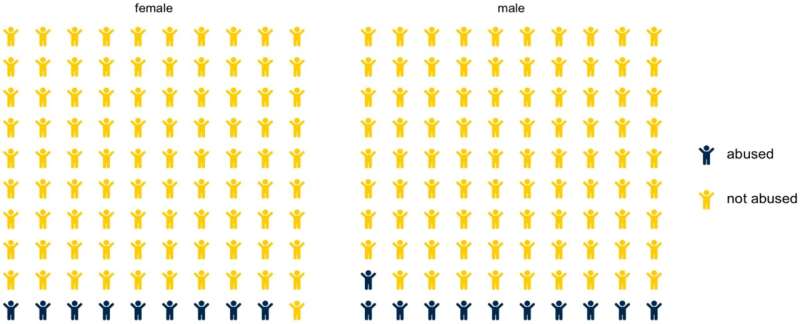Gender inequality can predict high rates of child physical abuse

The challenges women in low- and middle-income countries face as they seek equal rights can cause distress—and some of them may take it out on their children with physical abuse.
In a new report published in the International Journal of Environmental Research and Public Health, University of Michigan researchers found that gender inequality at the adult level perpetuates women's economic insecurity that contributes to higher levels of child abuse.
The study involved more than 420,000 households from UNICEF and United Nations data from 51 countries.
Respondents answered questions about whether they hit, beat or slapped the child in the face, head or ears in the past month. A separate index collected by the UN measured levels of gender inequality. Using multiple variables, the researchers calculated the odds of child abuse.
The study found that nearly 8% of children were exposed to physical abuse, more often occurring in situations in which levels of gender inequality were higher. Other situations where child abuse was high were for those living in urban residences or having a higher number of household members. The odds of abuse were lower when the respondent was someone other than the biological parent, the study indicated.
The odds of physical abuse were slightly higher for boys than girls when adult inequality was accounted for, the research showed. The study's authors cite two factors: Higher levels of gender inequality may be related to higher levels of violence against women, and higher levels of gender inequality may be related to fewer opportunities for women.
The researchers noted that eliminating gender discriminatory legislation and practices would empower women economically and politically, thereby strengthening their caregiving roles and promote nurturing, nonphysical child-rearing practices.
"Gender equality benefits all children, especially in low-resource settings where child care responsibilities primarily fall on women," they wrote.
More information: Julie Ma et al, Gender Inequality in Low- and Middle-Income Countries: Associations with Parental Physical Abuse and Moderation by Child Gender, International Journal of Environmental Research and Public Health (2022). DOI: 10.3390/ijerph191911928


















